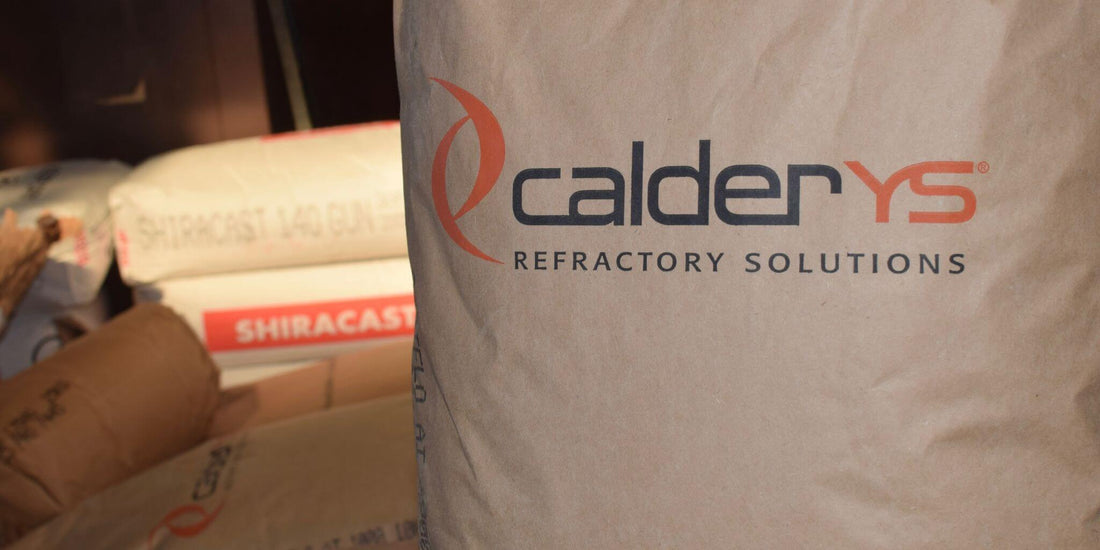Building your own DIY pizza oven? First off — solid choice.
But before you mix up a bag of regular cement and hope for the best… stop right there.
If you’re using Pizza Oven In A Box, you’ll be casting your dome with a heatproof mix over our cardboard pizza oven mould. And for that, you need the real stuff: castable refractory cement.
Let’s clear up the confusion — no jargon, no fluff, just the facts.
🔥 What Is Refractory Cement?
“Refractory” just means it can handle high heat — we’re talking 1300°C and up.
Think furnaces, kilns, and wood-fired pizza ovens.
This isn’t your average cement. Refractory cement is made to survive fire without cracking, crumbling, or falling apart. And when you’re firing your backyard oven to cook pizza, roasts, and bread — that heat resistance matters.
🧱 What Does “Castable” Mean?
Castable refractory means it mixes with water and covers like concrete.
Once it sets, it forms a rock-solid, heatproof dome.
Here’s how our system works:
✅ Cover the mix over the mould
✅ Let it cure
✅ Remove the mould — done
No bricklaying. No sculpting. Just cover and go.
❌ Why You Can’t Use Regular Cement
We’ve seen the DIY disasters:
-
Someone uses regular cement or concrete mix
-
The oven looks good — for a week
-
Then it cracks, flakes, or blows apart under heat
Regular cement isn’t made for fire. It’s made for paths, posts, and driveways. It can’t handle 500°C+ temps inside a wood-burning oven.
🧱 And Watch Out for Misleading Labels
Even some "refractory" products are just high-temp mortars. They’re made to glue bricks — not form solid structures.
If it doesn’t contain aggregate, it’s not structural.
🧪 What’s Actually in Refractory Cement?
Real castable refractory cement has a few must-have ingredients:
-
Calcium Aluminate Cement – the high-temp binder
-
Refractory Aggregate – crushed firebrick or grog for structure
-
Silica & Alumina – boosts heat resistance
-
Perlite or Vermiculite (optional) – adds insulation, not structure
👉 If there’s no visible grit or texture, it’s missing aggregate — and that means it’s not strong enough for a dome.
🔍 How to Know What You’re Buying
Look for bags or listings that say things like:
-
“Castable Refractory Cement”
-
“Rated to 1300°C or higher”
-
“Contains aggregate or refractory rock”
👉 If it looks like smooth grey powder and feels like flour — it’s not the right stuff.
Real castable refractory should feel gritty in the bag — that’s the crushed firebrick or aggregate that gives it strength.
If it pours too smoothly, like dust, it’s probably just a high-temp mortar or glue — not made for casting domes.
💡 Brand Names to Look For
If you're shopping online or through a firebrick supplier, these names are solid bets:
-
ISTRA 40 – great performance and widely used
-
Calcast by Calderys – industrial-grade quality
-
Vesuvius Castables – top-tier refractory brand
-
Thermbond or PlicoCast – more common in the U.S.
No matter the brand, make sure it’s castable and contains aggregate.
🤯 Why So Many People Get It Wrong
One word: branding.
Manufacturers throw around all sorts of terms like:
-
Refractory Cement
-
Castable
-
Fireproof Mortar
-
Heatproof Concrete
-
High-Temp Adhesive
Some are coatings. Some are just glue.
Only one is right for building a DIY pizza oven dome — and that’s castable refractory cement with aggregate.
🧱 Quick Note on Texture
Not all refractory cement is created equal.
-
Smooth and powdery? Probably mortar — not for domes.
-
Heavy, gritty, and textured? That’s what you want.
👉 Always check for aggregate in the mix. That’s what gives your dome real strength and fire resistance.
🧯 Do You Need Perlite?
Perlite (or Vermiculite) is a lightweight, foamy rock used for insulation.
It’s not structural, but it does help your wood-fired oven hold heat for longer.
If your refractory mix doesn’t already include it, you can pack it around your dome before rendering the outside.
✅ Quick Recap: What You Actually Need
If you're building with Pizza Oven In A Box, here’s the go-to list:
Must-Have:
1x Castable Refractory Cement (with aggregate)
🔥 Not mortar. Not regular cement. Only castable refractory.
Build it right, and you’ll have a backyard oven that cooks like a beast.
🔥 Not All “Cement” Is Created Equal
| Term | What It Really Means | Use in Pizza Ovens |
|---|---|---|
| Refractory Cement | A heatproof mix that handles 1300°C+ temps. Contains special binders and crushed rock. | ✅ Yes — this is what you pour on the mould to make your dome. |
| Castable Refractory | Same as above — just a more accurate name. “Castable” means you can mix and pour it. | ✅ Yep — this is the good stuff. Same as refractory cement. |
| Regular Cement | Standard Portland cement used in driveways and fences. | ❌ Nope — it’ll crack and fail under heat. |
|
Mortar / Fire Mo rtar |
Used to glue fire bricks together — not for domes. | ❌ Not strong enough for a cast dome. |
| Perlite / Vermiculite | Lightweight insulation — keeps heat in. Not structural. | ✅ Yes — great for insulating around the dome. |
👊 Final Word: Don’t Cut Corners
If you’re building your own wood-fired pizza oven, you’re already doing the hard part.
Don’t ruin it with the wrong cement.
Use real castable refractory cement with aggregate.
Build it once. Enjoy it forever.
Got questions? Want to make sure you’re buying the right stuff?
Hit us up — we’ll always give you a straight answer.
Or just grab the mould and get started:

